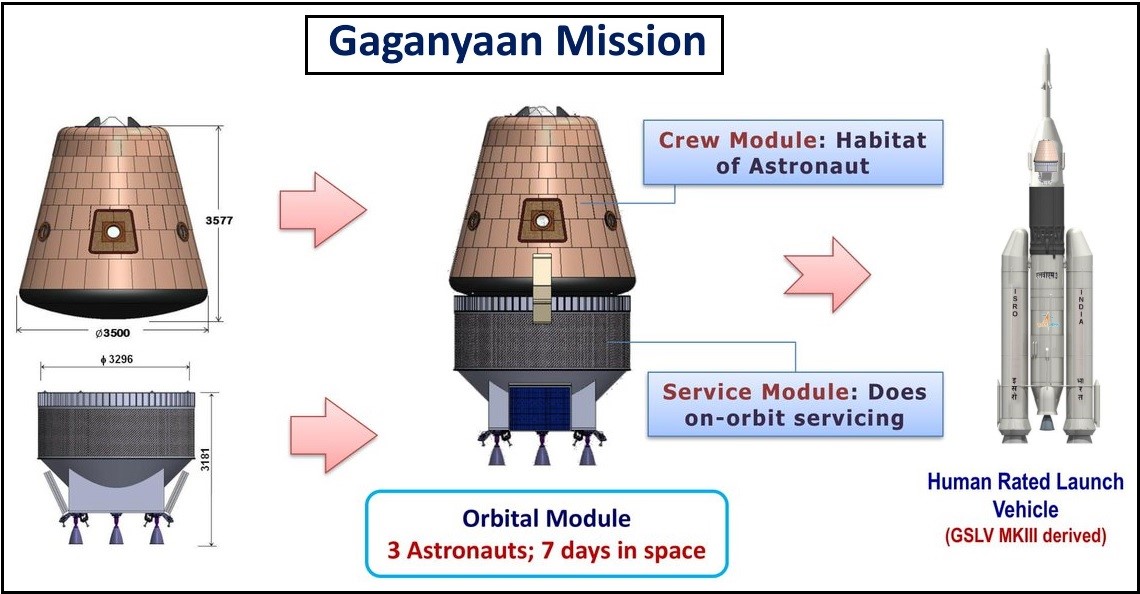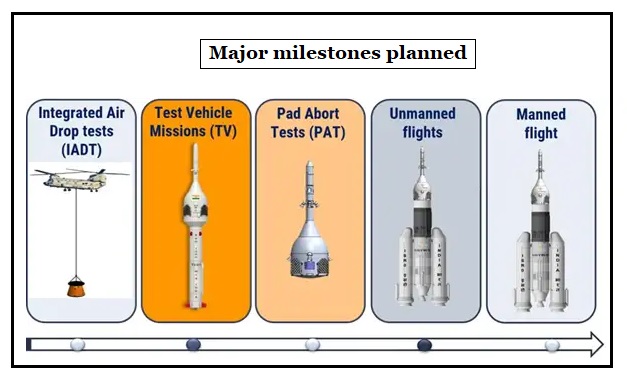Recently Prime Minister Narendra Modi publicised the final shortlist of candidates to be astronauts on board the maiden human spaceflight mission called Gaganyaan of the Indian Space Research Organisation (ISRO).

|
Stages of LVM-3 |
Components |
|
First stage |
It comprises of two solid-fuel boosters strapped to the rocket core. |
|
Second stage |
It is powered by two liquid-fuelled and clustered Vikas 2 engines. |
|
Third stage |
It has the CE-20 indigenous cryogenic engine with liquid hydrogen and liquid oxygen as fuel and oxidiser, respectively. |
LVM-3 was earlier called as GSLV Mk-III

|
Crew module |
Service module |
|
It is the habitable space with Earth like environment in space for the crew. |
It will be used for providing necessary support to CM while in orbit. |
|
It consists of pressurized metallic inner structure and unpressurised external structure with Thermal Protection System (TPS). |
It is an unpressurized structure containing thermal system, propulsion system, power systems, avionics systems and deployment mechanisms. |
|
Features- Parachute, Crew Escape System, Environmental Control and Life Support System |
It is a regulated bi-propellant-based propulsion system that caters to the requirements of the Orbital Module, |
|
It will also feature a gynoid (feminine robot) named ‘Vyommitra’ to perform critical tasks. |
It performs orbit injection, circularisation, on-orbit control, de-boost manoeuvring and Service Module based abort (if any) during the ascent phase |
ISRO signed a Memorandum of Understanding (MoU) with Glavkosmos, a subsidiary of the Russian space agency Roscosmos, for the training of the crew.